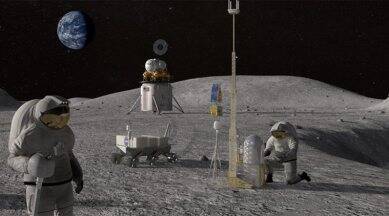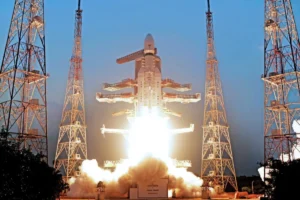
NASA’s Orion
NASA’s Orion made a blisteringly fast return from the moon at 11:09pm IST, on 11 December 2022. The Orion’s landing in the Pacific Ocean has marked the end of the inaugural Artemis 1 lunar mission exactly 50 years after Apollo’s final moon landing.
Artemis 1 mission is a new project of the US space agency. Artemis name in Greek mythology is the sister of Apollo.
The Orion has passed about 127 km above the moon in a fly-by in its 35 days mission. It re-entered the Earth’s atmosphere at 24,500 miles per hour (39,400 kph).
The Artemis mission has built the existing achievements of space technologies over the past few decades. It will be the foundations for more complex and ambitious missions in the future.
Also read: NASA is set to launch Artemis 1
There were no people aboard this time as it was a test. It is the first in a series of missions that are planned to not only take humans back to the Moon, but to also explore the possibilities of extended stay there, and to investigate the potential to use the Moon as a launch pad for deep space explorations.
Orion logged 1.4 million miles (2.25 million kilometers) as it zoomed to the moon and then entered a wide, swooping orbit for nearly a week before heading home.
It came within 80 miles (130 kilometers) of the moon twice. At its farthest, the capsule was more than 268,000 miles (430,000 kilometers) from Earth.
The spacecraft has collected various data and photos of Earth, moon surface that has left mission team speechless.
Splashdown.
After traveling 1.4 million miles through space, orbiting the Moon, and collecting data that will prepare us to send astronauts on future #Artemis missions, the @NASA_Orion spacecraft is home. pic.twitter.com/ORxCtGa9v7
— NASA (@NASA) December 11, 2022
The Artemis project manager, Mike Sarafin, couldn’t hide his delight at seeing a perfect splashdown: “ Folks, This is what mission success looks like”.
“I’m overwhelmed,” NASA Administrator Bill Nelson said from Mission Control in Houston. “This is an extraordinary day… It’s historic because we are now going back into space, deep space with a new generation.”
Putting people on the next flight will “ratchet up the excitement,” said Nujoud Merancy, chief of NASA’s exploration mission office in Houston.
“No one’s been to the moon in my lifetime, right?” she said. “So this is the exploration that so many of us have been dreaming about”.
To read more such news, download Bharat Express news apps





















